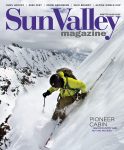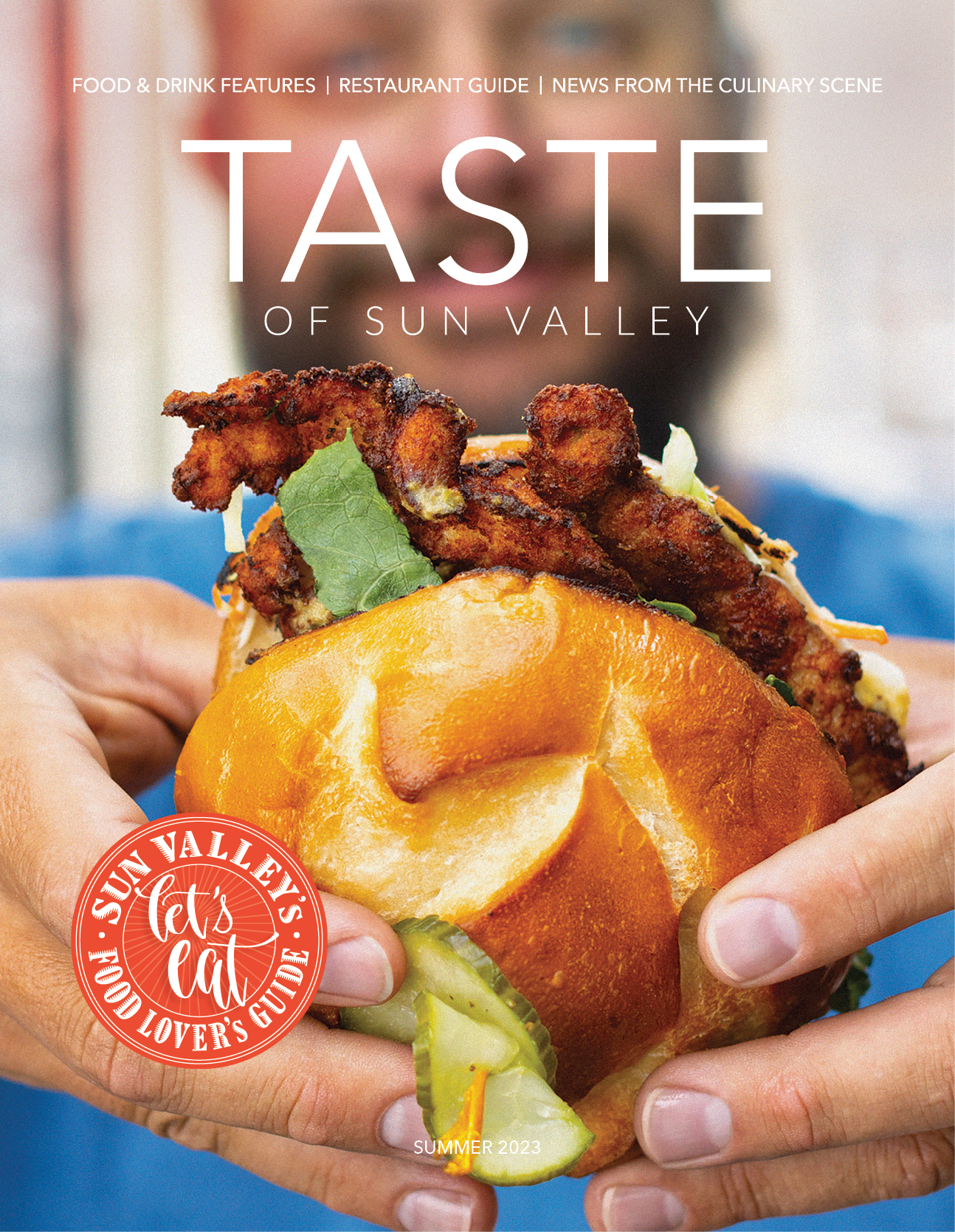For any local, the occasional encounters of elk on the highway or raccoons rummaging through the garbage are reminders that despite the number of animals who hibernate the winter away, many are still out.
With summers known for their dry heat and consequently dry soil, it is rare to be able to see the tracks left by the many creatures that frequent our backyards. However, come winter, the snow provides the perfect layer to record the history of each critter that passes through, even those as small as mice.
Wildlife tracking expert Ann Christensen refers to such tracks as “stories in the snow.”
“The whole idea of tracking is looking for patterns,” Christensen explains. “You can live in snow country for years and not see this stuff, but once you start looking—you see it more and more.”
![]() Learning to identify which paws leave which prints seemed like it might be some fun, so I decided to attend a winter animal tracking class taught by Christensen and put on through the Environmental Resource Center (ERC) last Saturday. The group of 24 other soon-to-be trackers and I met at ERC building in Ketchum, where we learned the basics of what to look for, and then carpooled north to Prairie Creek.
Learning to identify which paws leave which prints seemed like it might be some fun, so I decided to attend a winter animal tracking class taught by Christensen and put on through the Environmental Resource Center (ERC) last Saturday. The group of 24 other soon-to-be trackers and I met at ERC building in Ketchum, where we learned the basics of what to look for, and then carpooled north to Prairie Creek.
Although the group was feeling slightly discouraged by a strong wind that we knew was quickly erasing many of tracks we were hoping to find, we all strapped on our snowshoes and began trudging into the woods in hopes of finding some tracks that had been sheltered by a nearby tree or bush.
Resembling something like that of a herd of elephants in search of a jellybean, we all began tromping around, trying to find a delicate set of tracks before trampling them. To my surprise, it only took a few minutes before some of the more experienced members of the group started pointing every which way and calling Christensen over to help them identify the prints they had discovered.
In the three hours we spent out looking for prints, we saw numerous squirrel tracks, weasel prints and burrows, snowshoe hare tracks and a fox trail. Christensen insisted that had it not been so windy, we would have seen evidence of other smaller creatures including mice, martens and voles.
![]()
Throughout the class I did my best to employ my college note-taking skills and scribble any tips or tricks for tracking I could. Here’s what I’ve got to share:
1. How to tell the difference between the feline family and the canine family: You can tell prints from the cat family apart from prints from the dog family because cat prints are very circular, whereas dog prints are usually longer than they are wide. Also cats retract their claws when they walk, whereas dogs leave them out, so cats’ prints don’t show claws but dogs’ do. And, for the record, foxes and coyotes are part of the dog family.
2. Notes on weasels: The weasel family includes wolverines, fishers, badgers, mink, skunks, otters and short and long-tailed weasels; all of which can be found in this region. They all have five toes (opposed to four like cats and dogs) with a boomerang-shaped pad in the center. Most weasels bound in the snow, which makes each pair of their tracks appear in alternating short and long distances from the next. Many times a hole will be visible where the weasel dove under the snow.
3. What signs to look for other than tracks: Many animals leave signs that may initially be more visible than the tracks, so looking for those first might then help you find tracks nearby. Rodents have teeth that are constantly growing, so they must chew on twigs and branches frequently to file down their teeth. This makes branches and twigs stripped of their bark a common sign of rodents.
Also scat, also known as animal droppings, is usually visible from a distance when it is on the surface of the snow. Become familiar with identifying scat types to know which tracks to look for after you find scat.
4. Notes on rodents: Rodents tend to leave messier tracks than weasels. Christensen said squirrels have the messiest tracks you’ll see other than a domestic dog. Rodents’ front feet have four toes and their hind feet have five.
5. Notes on hopping animals: Both members of the rodent family and the rabbit family can leave hopping tracks. Animals that hop have large back feet, which frequently land in front of the their small front feet when they hop. This means in the prints, the hind feet appear to be in front of the front feet.
You can determine the hopping track of ground dwelling animals (including rabbits, hares, shrews and most small to medium-sized rodents) from tree climbing animals (including tree squirrels, chipmunks and mice) because the ground dwelling animals two hind feet will be in line, next to one another, but their front feet will be offset from each other. Tree climbing animals’ front paws and hind paws will both be in line.
I also put together a small photographic guide to the prints we saw. If you see a set of tracks in your yard or when you’re out in the backcountry, compare it to these and see if you can identify what made it:

Snowshoe hare tracks are identifiable by the two large hind feet, which are in line with each other in the front, and the two smaller, offset front feet behind them.
Red squirrel tracks are often messy. They are identifiable by the hopping pattern of a tree dweller, in which both the larger hind and smaller front feet are in line with each other.
Weasel tracks show alternating long and short gaps between each print due to their bounding movements. In many cases, weasel tracks are located near a weasel hole, as they are here.
Snowshoe hare scat looks like the little pellets on the bottom left of this photo. Often times scat means you can spot tracks nearby.
There are many ‘false alarms’ in animal tracking. Don’t forget that domestic dogs, snow falling from tree branches, blowing pine needles and people in the backcountry leave tracks too. This is the track just a single snowshoer left behind.
Things to Buzz about:
Sun Valley Nordic Festival—Saturday, Jan. 29-Sunday, February 6, 2011
Celebrate the Valley’s vast Nordic trails with the Sun Valley Nordic Festival. Whether it’s with long-running, traditional events, such as the Boulder Mountain Tour or newer ones created for the festival; this eight-day Nordic extravaganza offers something for everyone. The culmination of presentations, races and other event aims to show why Sun Valley has been named Nordic Town USA. For the calendar of events and more information, visit www.svnordicfestival.com/.
Friends of Galena Winter Benefit Dinner and Auction—Saturday, Jan. 29, 2011
Join the BCRD in their 15th annual fundraiser for the Galena Lodge and North Valley trails in the Limelight Room Saturday, Jan. 29, 2011. Tickets are available online at www.bcrd.org or by phone at 578-7722. Tickets cost $100 per person and include an Italian-themed three-course meal. The evening will also entail a silent and a live auction.
Edible birdhouse making—Thursday, Jan. 27, 2011
Join Colleen Pace, owner of For the Birds!, at the Sawtooth Botanical Garden 5:30-7:30 p.m. Thursday, Jan. 27, 2011 to learn how to build edible birdhouses. The class is open to adults and families and costs $25 a person. All materials will be provided, and part of the proceeds goes to the Sawtooth Botanical Garden. Call 726-9358 to register or visit www.sbgarden.org for more information.







